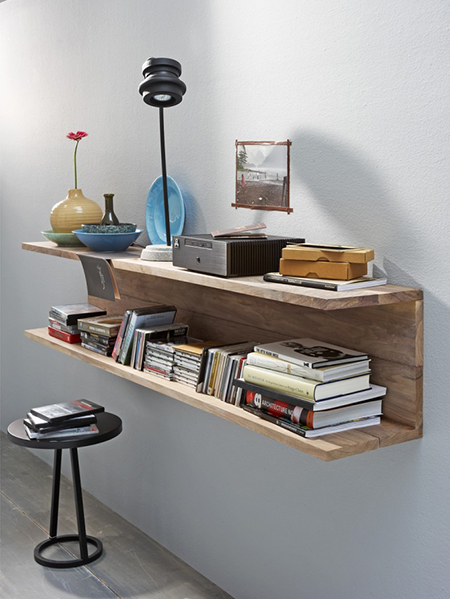How to make a DIY shelf unit
Use meranti to make a simple yet practical wall-mounted shelf unit. For this shelf we show you two methods of joining the boards together; using a biscuit jointer or using a Kreg pockethole jig. You can also use dowel centres and dowels to join the boards together.
This shelf unit is constructed of two joined boards for the top, back and bottom of the unit.
Making shelves or joining boards so that no screws are visible is reasonably simple and there are three methods of joining boards, and all three methods provide a strong way to join sections of wood together to make wider boards.
Dowels and Dowel Centres
While using dowels and dowel centres is the most affordable method if you don’t already own a biscuit joiner or pockethole jig, it’s also the most fiddly. Making sure that your holes and dowels are one hundred perfect inline is not easy and you can end up being frustrated because the joined boards are not level or straight.
Biscuit Jointer
While a biscuit jointer can cost anywhere from R3000 upwards depending on the make and model your buy, this is money well spent if you do a lot of furniture making projects, jobs where boards need to be joined, or where you want a project without any visible screw holes or joints.
A Biscuit Jointer cuts a slot in boards – in both sections to be joined – that allows you to insert a biscuit (or wood wafer).
The magic happens when you apply Ponal wood glue into the slots and slip in the biscuits. When you fit the two sections to be joined together, the biscuits absorb the wood glue and swell. As the glue dries, this type of joint is impossible to separate.
Once the glued joint dries you can see how easy it is to join two boards together without any visible fastenings.
You can also use the biscuit jointing method to make a corner butt joint, as is used to make the wall-mounted shelf unit at the top of this page.
Again, using a biscuit jointer allows you to join together boards without any visible screw holes or brackets.
Kreg Pockethole Jig
Costing from R700 for the basic jig and around R2500 for the complete Master Set, a Kreg Pockethole Jig is definitely a ‘must-have’ accessory for your workshop.
With even a basic system consisting of the jig and a clamp you can join together boards or assemble furniture without any visible screws on the front of your projects.












Comments
mac Muller says
What would you suggest:
Using a biscuit jointer or Kreg pocket hole jig when joining wood for like in this article the shelve or when making a table top?
Add comment
replies
Gareth Williams says
Hello Mac, both are fine options. The Kreg leaves holes which can be seen from below, so if your shelf/table top is visible from underneath consider going for the Biscuits. Kreg is alot faster though
Add comment
replies
Add comment